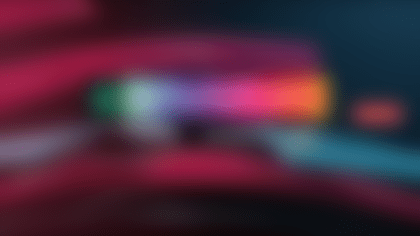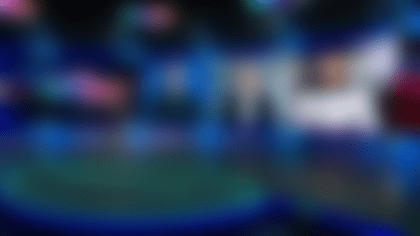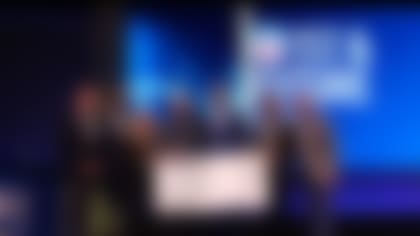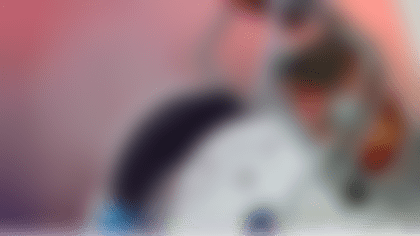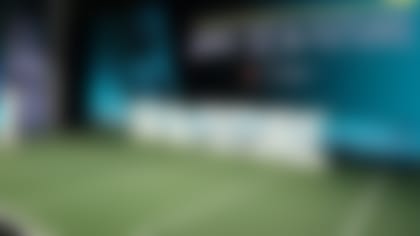While the Kansas City Chiefs and Tampa Bay Buccaneers locked in their Super Bowl game plans, some of the best and brightest minds pitched innovative ideas that aspire to change how the game of football is taught, played and watched.
The NFL teamed up with Amazon Web Services to host a virtual edition of 1st and Future, the NFL's annual pitch competition designed to spur innovations in player health, safety and performance. For the first time this year, 1st and Future was transformed into a primetime program that aired February 2 on NFL Network in the lead-up to Super Bowl LV. Tech entrepreneurs and data scientists from around the world vied for $150,000 in total prize money.
"We want to stay on the cutting edge of everything we do," said Reggie Scott, Los Angeles Rams Vice President of Sports Medicine and Performance, who was one of the judges for the competition. "It's really critical that we stay progressive and continue to look at products that can help [players] optimize their game on the field."
To date, 1st and Future has awarded a combined total of $900,000 to entrepreneurs and data scientists.
"The NFL continues to bring in innovators and entrepreneurs to apply their technologies to football," said Jeff Miller, NFL Executive Vice President overseeing the league's health and safety programs. "We've seen products start on the 1st and Future stage and then appear on NFL fields relatively quickly, and that's a huge advance for the league and for our efforts to protect players."
Former winning innovations were featured throughout this year's show, many of which are now used in the NFL and beyond, such as Mobile Virtual Player (MVP)'s robotic tackle dummy and Protect3d's custom protective devices.
This year's competition was divided into two categories: the Innovations to Advance Player Health and Safety Competition and the NFL Computer Vision Competition.
Finalists in the Innovations category were given five minutes each to pitch their product concepts intended to improve player health and safety. After each pitch, a panel of judges from the worlds of sports, medicine, tech and business questioned contestants about the potential impact of their ideas.
Organic Robotics Corporation (ORC) took home the $50,000 top prize in the Innovations category for its Light Lace™ sensor designed to use light to measure muscle fatigue and respiration. Second-place winner Genesis Helmets, Inc. received $25,000 for its proprietary computational modeling and patented technology designed in an effort to create better-performing football helmets.
The winners of the Computer Vision category were also unveiled during the program. The first-place finisher was Dmytro Poplavskiy from Brisbane, Australia, whose winning computer vision model uses ultra-high-resolution imagery and data to track and analyze helmet impacts.
Smart Technology that Predicts Fatigue & Applies that Knowledge to Solve Real World Problems
Ilayda Samilgil, CEO and Co-Founder of ORC, developed an interest in physics, math and engineering from an early age and knew she wanted to apply that knowledge to real life.
She impressed the 1st and Future judges with her company's innovative wearable technology, a smart shirt with integrated Light Lace™ sensors.
"Light Lace sensors can bend and twist with the human form to measure muscle activity in real time and on the field," Samilgil explained during her pitch.
"The sensors can cover the whole body, are easy to calibrate, have high wash and wear tolerance and can take high-speed measurements," she added.
Athletes receive three sets of information from the smart shirt: skeletal motion, muscle activity and respiration. Those three sets of data, Samilgil explained, are intended to help prevent injuries and improve performance by individualizing the training process.
"Once athletes begin training, they will receive text alerts or their shirt will start glowing to let them know they're overworking a specific muscle group," she said.
In addition to the potential health benefits, the smart shirt is also comfortable, durable and waterproof – since the technology uses light to measure activity, there are no messy and uncomfortable wires.
With the prize money from 1st and Future, the company says they will focus on further miniaturizing their technology, developing lower body garments and testing products with commercial partners.
A Helmet Combining Award-Winning Technologies
Joe Condon, the President and co-founder of Genesis Helmets Inc., is a diehard second-generation Chicago Bears fan. That passion fueled him to put years of research to work to try to design a better-performing football helmet.
Condon also hopes his technology will be scaled across sports and industries, from bike helmets to military and first responder gear.
Using computational modelling, Genesis simulated certain head impact and drop tests to develop its first helmet prototype, a unique design that features center of gravity alignment and proprietary coating, as well as a flush face mask, heat management system and load-distributing shell.
"Genesis is leveraging six exclusively licensed patents to bring our technology to market," Condon explained during his pitch.
"We're bringing together two former NFL HeadHealthTECH award-winning companies: Yobel, with a patented facemask design, and Auxadyne, a proprietary and patented auxetic foam liner technology," Condon explained.
The team met at a symposium hosted by the NFL back in November 2019 to kick off the NFL Helmet Challenge, an innovation challenge that aims to stimulate the development by experts, innovators and helmet manufacturers of a new helmet for NFL players that outperforms, based on laboratory testing, all helmet models currently worn by NFL players.
The $25,000 in prize money will help Genesis optimize and test their second-generation helmet, which they plan to enter into the NFL Helmet Challenge this summer to compete for up to a $1 million award.
Solutions to Better Identify Helmet Impacts
For the Computer Vision category of this year's competition, data analytics experts from around the world were challenged to use their modeling skills to advance sports safety. The NFL provided applicants with actual game data and asked them to create new ways to detect on-field helmet impacts.
The response was overwhelming: Nearly 7,800 submissions from 55 countries.
The first-place finisher was Dmytro Poplavskiy from Brisbane, Australia, whose winning entry uses ultra-high-resolution imagery and data to track and analyze helmet impacts.
NFL Commissioner Roger Goodell emphasized the importance of these computer vision models for automating the identification of on-field helmet impacts in a panel discussion during the show: "We see a need to be able to look at all of the helmet impacts and to be able to look at the data that comes from that so that we can create better protective equipment, change the rules and change some of the techniques that are coached and played," Goodell explained. "We were doing that manually. And by using machine learning, we can do that much more rapidly and make a difference."

